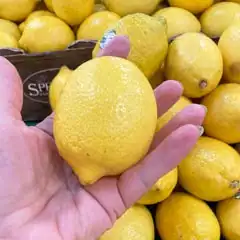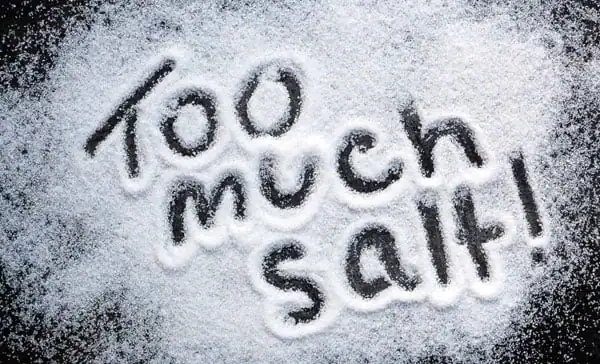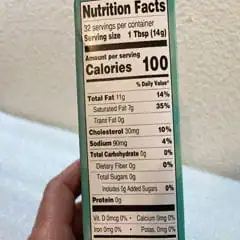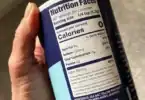Salt is one of the oldest food flavoring agents known to man. Civilizations have incorporated salt into their culinary traditions for centuries. From enhancing the flavor of food to acting as a preservative, salt has a long history. While it’s essential to our diet, the question is: How much salt is too much salt?
What is Salt?
Salt, from a chemists point of view, is a combination of sodium (Na) and chloride (Cl). Sodium, is an electrolyte, critical for various functions in the body, including regulating blood pressure, nerve function, and muscle contractions. Chloride is a key component of hydrochloric acid and is vital for digestion in the stomach. Sodium has a number of functions in our body, with one of the most important being the balance of fluids. Sodium attracts the most attention when it comes to health.
In this article, we’ll focus on dietary salt, but I’ve written a What Is Salt? article that focuses on a wider range of useful salts that go beyond culinary salt.
How Much Salt Do We Really Need?
The human body requires salt to function properly, but the amount needed is usually far less than most people consume. The World Health Organization (WHO) recommends no more than 5 grams (about 1 teaspoon) of salt per day, which equates to roughly 2 grams of sodium. This is enough to maintain the proper balance of fluids, nerve function, and muscle activity. It is enough to allow for perspiring – the body’s way of regulating temperature. Different salt sources such as table salt, kosher salt or sea salt vary in the amount of sodium per teaspoon. If you are interested in how much sodium various salts contain, see our Salt comparison article, Salt Comparison Guide: Salt Sodium Content.
In the United States, the average person consumes between 9 and 12 grams of salt daily. This is the reason we are bombarded with warnings about over indulging in salty foods and suggestions about how to avoid excess salt. Extra sodium is often hidden in processed foods like canned soups, snacks, fast food, and ready-to-eat meals, which are packed with sodium. Even foods that don’t seem very salty, such as packaged cookies or salad dressing contain salt. Food manufacturers like to add salt for the simple reason that it tends to make their products taste better.
Why is Salt So Important?
Maintaining your daily sodium intake at appropriate levels is beneficial for a number of reasons.
Fluid Balance – Sodium plays a critical role in maintaining the balance of fluids in the body. It helps retain water in the blood and cells, keeping you hydrated. Without enough salt, your body can’t regulate internal fluid levels properly, which can lead to dehydration or an imbalance in electrolyte levels. When you perspire, you are losing salt from your body in the sweat that you produce. This is one of your body’s key methods of heat regulation.
Blood Pressure Regulation – Related to fluid balance above, Sodium has a direct impact on blood pressure. When you consume too much salt, your body retains more water, which increases blood volume and can elevate your blood pressure. This can put extra strain on your heart and blood vessels.
Nerve Function – Nerve cells use sodium to transmit electrical signals throughout the body. When you touch something hot or need to move a muscle, sodium ions create the electrical impulses necessary for your body to respond. Without enough sodium, your nervous system can be impaired.
Muscle Contraction – Salt is essential for muscle function. Sodium helps muscles contract properly. This is why electrolyte imbalance from dehydration or excessive salt loss can lead to muscle cramps or weakness. Athletes often consume sports drinks to replace electrolytes that are expended in physical activity.

What Happens When I Eat Too Much Salt?
Have you ever been extremely thirsty after consuming a sushi dinner? All that sodium in the soy sauce is probably the culprit! Short term symptoms of consuming too much salt also include stomach bloating, fatigue, frequent urination and can even cause nausea or headaches. Some people also report that their hands, fingers or ankles swell up.
If you do think you’ve had too much salt in a meal or a day – here are some things to do:
– Hydrate! Drink lots of plain water.
– Get some potassium in your diet to help balance electrolytes. Bananas, avocados (nope – lay off the guacamole – it probably has salt in it!) or leafy greens are good choices.
– Sweat! Get a good workout in and sweat out some sodium. At least go take a brisk walk and keep it up until you are perspiring. Go drink some more water.
– Resolve to be more careful going forward ;)
In the long term, when you consistently consume too much salt, you can open yourself up to a number of conditions. Let’s talk about those next.
Long Term Risks of Too Much Salt
Too much sodium in the diet is linked to a variety of health issues. Here’s why you should watch your salt intake:
High Blood Pressure – One of doctors biggest concerns regarding overconsumption of salt is that too much sodium can lead to hypertension, a condition where your blood pressure is consistently elevated. Hypertension has been referred to as the “silent killer” because it may have no obvious symptoms that you notice but can lead to severe complications such as heart disease, kidney failure, and stroke.
There is even a name for too much sodium in your blood: hypernatremia. The opposite condition is hyponatremia, which is an abnormally low level of sodium in the blood. While far more rare, there are a few people who suffer from this condition.
Kidney Damage – Kidneys filter waste and excess fluids from your body, and this includes excess sodium. If you regularly consume too much salt, your kidneys can become overworked, leading to long-term damage and an increased risk of kidney disease.
Osteoporosis – Excessive salt can cause your body to excrete calcium through urine. If you are not consuming enough Calcium to compensate, this can weakening your bones over time. This can lead to osteopenia, and eventually to osteoporosis.
Cancer – Some studies suggest a link between high salt intake and an increased risk of stomach cancer. High salt levels may damage the stomach lining and increase the growth of harmful bacteria that may contribute to the development of cancer.
How Do I Reduce Salt Intake?
If you’re looking to cut down on salt, here are some things to try:
Cook at Home – One of the easiest ways to reduce your salt intake is by preparing meals at home. Restaurant meals and “ready meals” from the grocery store are often loaded with sodium. Cooking your own food not only allows you to control the amount of salt used, but to know pretty accurately how much you are using.
Start with Fresh Foods – Fresh produce such as fruits and vegetables contain less sodium compared to their processed counterparts. Select lean proteins that are fresh and unprocessed. Opt for whole foods whenever possible.
Use Herbs and Spices – Experiment with other seasonings like garlic, basil, oregano, rosemary, and cumin. These can add rich flavor to your dishes without the added sodium. When selecting season blends, look for the ones that are salt free or low salt.

Drizzling Lemon Juice on foods can take the place of salt.
Read Those Labels – When shopping, always check food labels for sodium content. Many processed foods have surprisingly high amounts of sodium, even in items like bread, cereals, and canned vegetables. Baked beans are notorious for high sodium numbers! Salt is used in most cheese production, so anything that contains cheese will have a fair amount of sodium.
Rinse First – When using canned vegetables, the liquid that they are packed in can contain sodium. Instead of just pouring in the entire can, rinse the veggies before adding them to your meal preparations.
Opt for Lower Sodium Alternative Products – Look for low-sodium versions of common ingredients like soup broth and canned goods. Many brands offer options that still provide flavor without the extra salt. My favorite low sodium alternative product is Soy Sauce. I think the brands that offer a version with about 40% less sodium actually taste better than the full sodium version from the same brand.
Use the Salt “On Top” – When preparing food, use less than the recipe calls for or less than you normally would use. Then, when serving the food, use a small amount of Finishing salt. This pleases the palate, but can significantly reduce the overall sodium consumption for the food.
I usually try for about 1/4 to 1/2 of what is called for in a recipe. There are a number of different finishing salts that can be used. My favorite finishing salt is Maldon salt, due to its flaky shape and crunchy texture. It also has a low sodium content per teaspoon because the salt is not very dense. For ideas, I describe a number of salts that can be used for finishing in an article about Maldon salt alternatives.
This is the spice blend that I use the most in my kitchen. While it was designed as a 'steak rub', the food that I use it for most is Hash Browns. The blend of rosemary, garlic, and lemon flavors is fabulous in my view. This blend DOES contain salt - about 1/4 teaspoon in a teaspoon of the spice blend, so when I cook with it, I don't add any additional salt. This link takes you to the 3 ounce jar, but the mix is also available in bulk sizes (for refills).

Frequently Asked Questions
How Do I Fix Too Much Salt in Food?
Short of tossing things out and starting over, is there anything that can be done if you accidentally add too much salt when you are preparing food? Things that can be rinsed such as partially cooked vegetables or meats like a steak or a salmon fillet can benefit from a quick rinse under the faucet. Place the items in a colander while rinsing, then turn down the heat on your pot or skillet until the excess water evaporates from the rinsed item.
If you are cooking something that is liquid based like soup, you can add slices of potato. The potato tends to absorb the salt better than many other ingredients. After cooking for 20 to 30 minutes, remove and discard the potato slices.
Uncooked pasta, especially something small like Orzo or Ditalini will also absorb salt, but since it is hard remove the pasta will become part part of your dish. You should also add more water to the pot to account for what the pasta will soak up.
Salt vs Sodium: What’s the Difference?
Salt contains Sodium in combination with Chloride. Your body can use both elements, but health authorities worry more about the Sodium because of all the reasons cited above in this article. In general, for one gram of salt, sodium makes up about 40% of the weight.
When food package labels list daily nutrition levels, they will list the Sodium – both the weigh in milligrams (mg) and how much of the daily requirement of Sodium is fulfilled by one serving of the product. Salt will be listed in the ingredient list.
Can Doctors Test for Too Much Sodium?
Yes, sodium levels can be tested either by a blood test or a urine test. Testing for sodium is a common parameter in a standard blood testing panel. You can also get just an electrolyte blood test that returns information about potassium, chloride, and other minerals in addition to sodium. Urine tests that do a 24 hour collection can also be helpful to give your doctor information if they suspect problems like dehydration or kidney problems.
If you are concerned that your sodium level may be high, or if you’d just like some reassurance that your salt management in your diet is appropriate, be sure to ask your doctor about having your sodium level tested.
How Much Sodium is in a Teaspoon of Salt?
It depends ;)
Sodium is measured in grams or more often in milligrams (mg) which are units of weight. People making food in their kitchen typically measure salt by volume, such as a teaspoon or 1/4 teaspoon. Some people (guilty!) just shake or pinch a bit into the mix.
Short of buying a really accurate kitchen scale, how do you know how much sodium is in the type of salt you are using? Sodium content can vary greatly between table salt, kosher salt, kosher salt from different brands, sea salt, etc. I wrote a detailed article listing various salts that people commonly use and give the amount of sodium per 1/4 teaspoon in a easy to read salt comparison table.
How Much Salt is in a Stick of Salted Butter?
In the United States, a standard stick of butter is 8 tablespoons. Most brands of butter contain between 90mg and 100mg of Sodium per tablespoon. So, a stick of butter would contain between 720mg and 800mg of Sodium.
If you are using unsalted butter and want to add salt to match a recipe calling for one stick of salted butter and you are using table salt, 800mg is about 3/8 teaspoon of table salt.

The food label on the butter is required to tell you how much sodium is in the product, so you can check the label. My brand has 90mg per tablespoon.
What Food Contains the Most Salt?
Processed foods like potato chips, soups, prepared meats (like bacon, ham and sausage), “ready meals” (either boxed or in the frozen section) and smoked foods top the list for high sodium content. Frozen pizzas (especially the type with lots of cheese) can have big sodium numbers.
Takeout food and restaurant meals can have high sodium content – but of course that is very dependent on the restaurant’s cooking techniques and type of menu. The problem of course with restaurant food is that it rarely comes with nutrition information, so you just don’t know.
The “extra butter” option on the movie theater popcorn is probably a really bad choice if you are concerned about your salt consumption.
Should I Salt the Pasta Water?
The purpose of salting pasta water is two-fold. The first reason is that it improves the flavor of the pasta. Unsalted pasta water makes for bland pasta.
The second reason is that adding salt to the water slows the process of the starch in the pasta swelling from water absorption, resulting in better ‘mouth feel’, or as the Italians say “Al dente” (literally “to the tooth”). The salt also changes the boiling temperature of the water slightly, but probably not enough to modify your cooking time appreciably.
Great cooks tend to recommend fairly salty pasta water: for each pound of pasta they use about 5 to 6 quarts of water and 1-1/2 to 2 tablespoons of salt. The good news is that the pasta only absorbs about a quarter of the salt. If you are trying to reduce your sodium intake, my recommendation is to use about half the suggested amount of salt, then allow everyone at the table to adjust the salt seasoning as desired by providing finishing salt.
What Kind of Salt is Better than Others?
From a sodium content point of view, most culinary salts are similar to others. One type is not really better or healthier. Some salts like sea salt flakes or certain brands of kosher salt are less dense, so you can get some salty flavor on top of your food while consuming a little less sodium. For comparisons of different types of salt for their sodium content, see my Salt Comparison Guide.
Some people consider certain culinary salts to be “better” when they undergo less processing, are naturally collected, or contain other trace elements like calcium, magnesium and iron. To read more about culinary salt types and their similarities and differences, a good place to start is Worth It’s Salt: 20 Different Types of Salt.
What About Salt Substitutes?
There are a number of products available that are designed for people who must reduce their sodium consumption, but still want a salty taste on their food. Most of these products contain potassium or replace some of the sodium with potassium. For some people, potassium gives an aftertaste that is unpleasant. This is definitely a subject where you must sample the different alternatives and see what you can live with.
If I Reduce My Salt Intake, Will Food Taste Bland?
The good news is that when you stop using too much salt, your palate can adjust to the lower salt levels. Instead of going “cold turkey”, many people have better luck with slowly reducing their sodium intake. Being more conscious of how much salt is in the foods you buy, being more careful about how much salt is added during preparation, and saving the bit of salt that you do use for the top of the food can all help. Over a period of 3 to 4 weeks, you’ll find that food tastes fine even though you are using less salt.
Should I Add Salt to my Diet if I Exercise a Lot?
The only way to know for sure is to ask your doctor for a sodium test, but in general most people who exercise a lot and sweat in the process do not need to supplement their sodium intake. Most people are getting more sodium than they need without supplementing.
There are always exceptions: top level athletes spent a lot of effort monitoring their electrolyte levels, including sodium. People who work outdoors all summer, such as landscapers, road construction workers, or roofers may need to replace their electrolytes more often than the several day a week gym rat.
Another thing to keep in mind: if you are regularly consuming sports drinks designed to provide electrolytes, be sure to read the label to see how much Sodium is being supplied in the product.
What About Iodized Salt?
The World Health Organization recommends that all salt consumed should be iodized (fortified with Iodine). Some cooks thing that Iodized salt negatively affects the flavor of some dishes, and prefer to use non-iodized salts like sea salt or kosher salt for certain food preparation, especially for salts applied as a finishing salt. In Details On Iodine In Himalayan Salt: What You Need To Know, I discuss the Iodization of salt (in general) and why humans need Iodine in their diet. So much of the salt available to us (either on the table or in processed foods) is Iodized these days, that iodine deficiency is rarely a concern in developed countries any more.
In The Importance of Iodized Salt I’ve also provided a list of foods containing iodine, including Iodized salt. The table in that article lists how much iodine is supplied per serving and also covers how much iodine you need daily.
Can Low Sodium Intake be Harmful?
Extremely low sodium levels in your body is called hyponatremia and can be harmful. While this condition can cause fatigue, nausea, headaches, confusion, or even in severe cases, seizures or coma, hyponatremia is extremely rare. The most common causes are other medical conditions or excessive water intake.
Final Thoughts
Salt is undoubtedly an essential nutrient, but like everything else, balance is key. It’s important to get enough sodium to support bodily functions, just as it is crucial to avoid overdoing it. Studies have shown that most people consume much more salt than necessary, which can have long-term health consequences. If you are unsure whether you are getting too much salt in you diet, be sure to check with your doctor so that you can be confident about making the right salt choices.
Featured pmage by Kampus Production. Drinking water photo by Lara Jameson.






